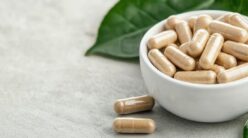The type of retinoid you use matters whether you are looking for a retinoid to treat acne, premature aging, fine lines and wrinkles, or
hyperpigmentation, dark spots . So before you stock up on your favorite anti-aging moisturizer or serum to treat your dark spots — or seek out any other over-the-counter skincare product that contains a retinoid — make sure it’s formulated with the right kind for your skin.
Retinoids are the skincare ingredient that everyone seems to know is great for the skin, but can’t articulate exactly why.
Although we have become accustomed to using retinol regularly, other vitamin A may be more effective. Due to its proximity to retinoic acid, retinaldehyde is up to 20 times more potent than Retinol a retinoid. And while it’s still somewhat rare in many skincare products, it may be the crucial element in the fight against photoaging.
In human skin, retinaldehyde is a precursor to retinoic acid generated as an intermediate metabolite during the transition from retinol to retinoic acid.
Thus, since retinaldehyde is converted to retinoic acid in human skin, retinaldehyde is effective in the therapy of photoaging. Retinoic acid can also help treat dark spots and pigmentation, reduce the appearance of fine wrinkles, promote collagen synthesis, smooth and soften your skin’s texture, minimize pores, and help reduce inflammation.
There are many retinaldehyde products available on the market, but I recommend a product that contains retinaldehyde along with other natural ingredients such as vitamin E, DMAE, and hyaluronic acid . Additionally, other products can be used in combination, such as glycolic acid, vitamin C, and other key ingredients.
These ingredients help treat a variety of skin issues. Additionally, retinol can help improve skin texture and tone and reduce the appearance of fine lines and wrinkles.
However, it is available in certain professional products prescribed by your dermatologist or skin care specialist. Additionally, retinaldehyde is also used as a research reagent.
To improve the results of retinaldehyde, include other antioxidants such as vitamin C and E , which can help protect your skin from free radicals; alpha hydroxy acids (AHAs) such as glycolic or lactic acid , which will exfoliate your skin to make it more receptive to topical treatments; salicylic acid, which helps increase cell turnover; the anti-inflammatory ingredient niacinamide, which helps reduce redness; and vitamins A and C, both of which provide photoprotection by neutralizing free radicals. In addition, the pore size maximizes the efficiency of skin cell renewal.
In addition to improving firmness, elasti
THE VERDICT: If you’re looking to try a more powerful ingredient to fight the signs of aging, start incorporating retinaldehyde into your routine. You use retinoids in conjunction with vitamin C, AHAs or BHAs since Nussbaum warns that this can increase the likelihood of sensitivity and discomfort. Instead, she advises applying sunscreen first thing in the morning and using the retinoid at night.
RETINALDEHYDE: WHAT IS IT AND WHAT IS IT USED FOR?
It is the skin’s natural process to convert retinol from retinaldehyde to retinoic acid. Retinaldehyde is a milder variant of the retinoic family. Like retinol, retinaldehyde rejuvenates the skin and improves its cell turnover rate, but in a less irritating formulation. Additionally, the conversion mechanism within the skin allows retinaldehyde to function at the cellular level. Therefore, skin more prone to sensitivity may be more tolerant of retinaldehyde skincare products.
Retinaldehyde is an anti-aging agent that strengthens connective tissue in the skin and stimulates collagen formation. Retinaldehyde also controls sebaceous (oil) production, shrinking skin pores to prevent clogging and inflammation.
Retinaldehyde is also used as an anti-inflammatory agent to reduce redness and inflammation. Retinaldehyde also increases the skin’s natural collagen synthesis, reducing fine lines and wrinkles.
Retinaldehyde is an effective antioxidant that protects the skin from free radicals, prevents damage and premature aging. In addition, retinaldehyde is a powerful antibacterial agent that kills bacteria and limits the formation of spots on the skin. A small amount of retinaldehyde in your skin care products will be enough to provide these benefits!
Use as directed . Keep out of reach of children. Avoid contact with eyes and broken skin.
If you are allergic to aspirin, please do not use this product. If irritation occurs, stop using the product immediately and consult your doctor if necessary differentiation Stimulates the formation of collagen.
What are the benefits of retinaldehyde for your skin?
Retinaldehyde, like any retinoid, has a wide range of benefits, regardless of your skin tone concerns.
However, this process takes longer as we age. By causing skin cells in the outermost layer of the skin to turn over more quickly, new cells can appear, resulting in smoother, more even skin.
Retinoids, especially retinaldehyde, act on the deeper layers of the skin and on the surface of the skin to accelerate cell turnover and stimulate collagen synthesis, which has anti-aging effects, promotes suppleness and restores tissue skin connective.
It helps keep pores clear by accelerating cell turnover and acting as an exfoliator, which is why it’s commonly found in acne treatments to keep pores clear.
Balances oil production: Retinaldehyde also balances oil production, shrinking pores to prevent them from becoming clogged and inflamed
Contrary to popular belief, retinoids increase the thickness of the inner layer of the skin, which is a good thing.
Use it whenever you want: On the other hand, retinaldehyde can be taken day or night without increasing the skin’s vulnerability to UV damage.





